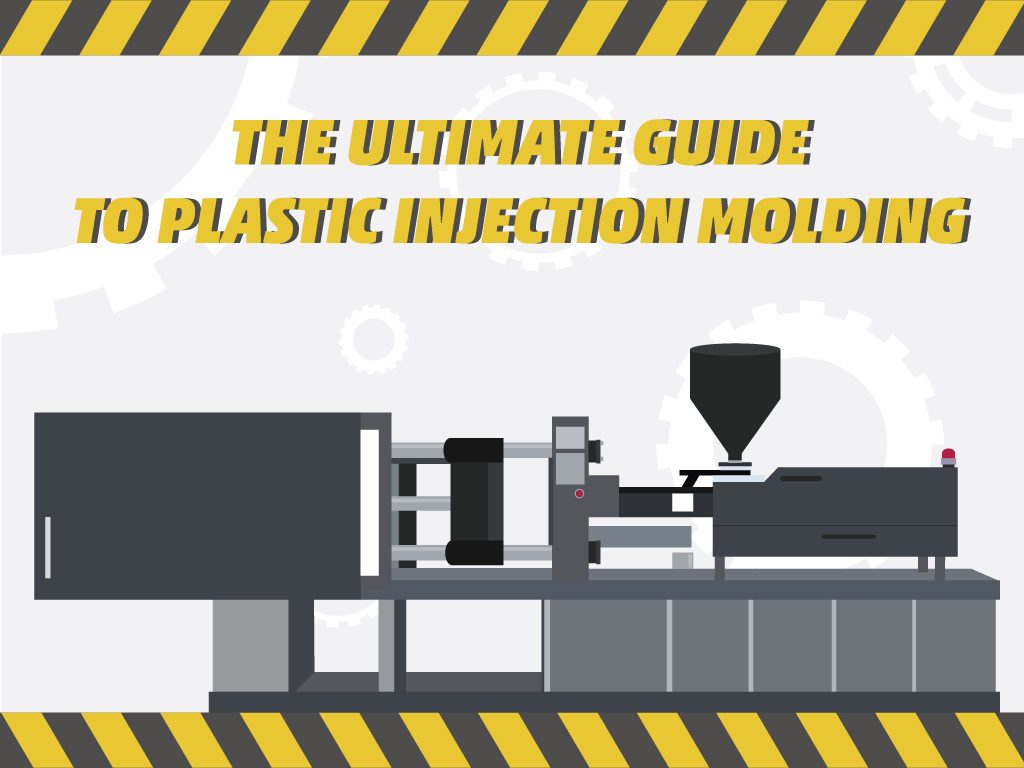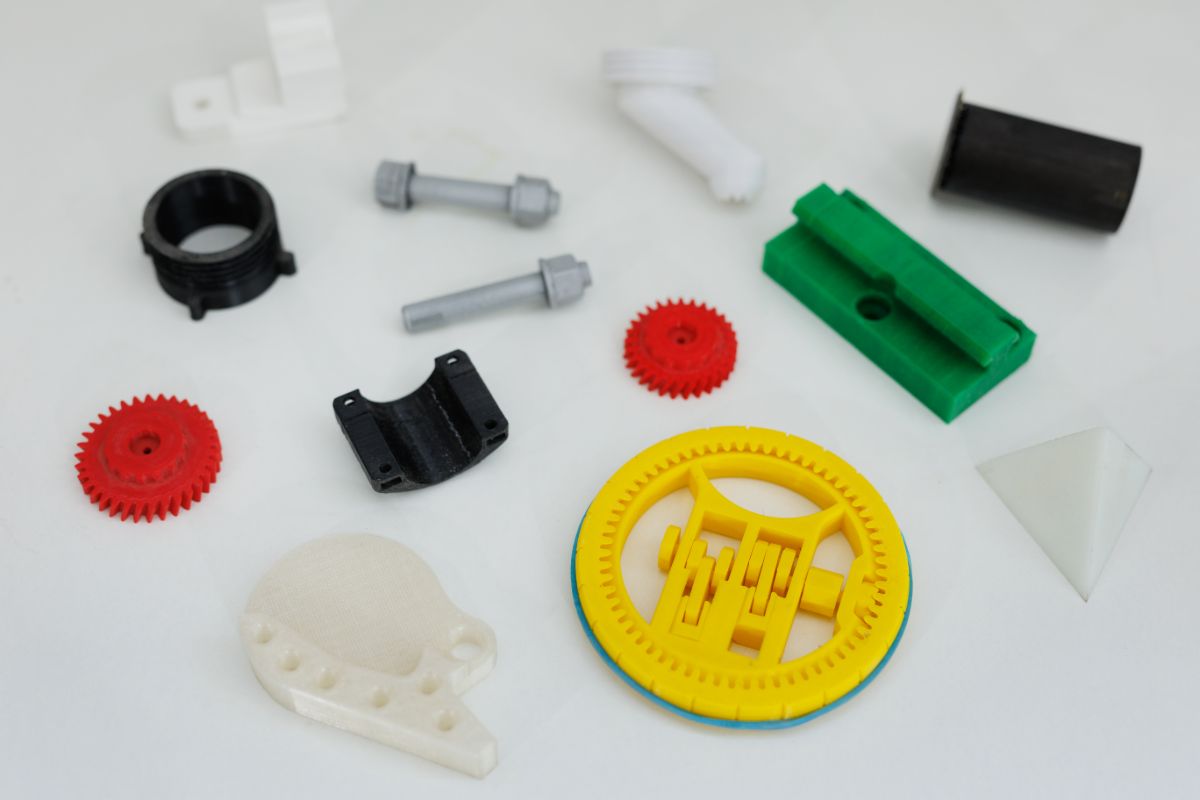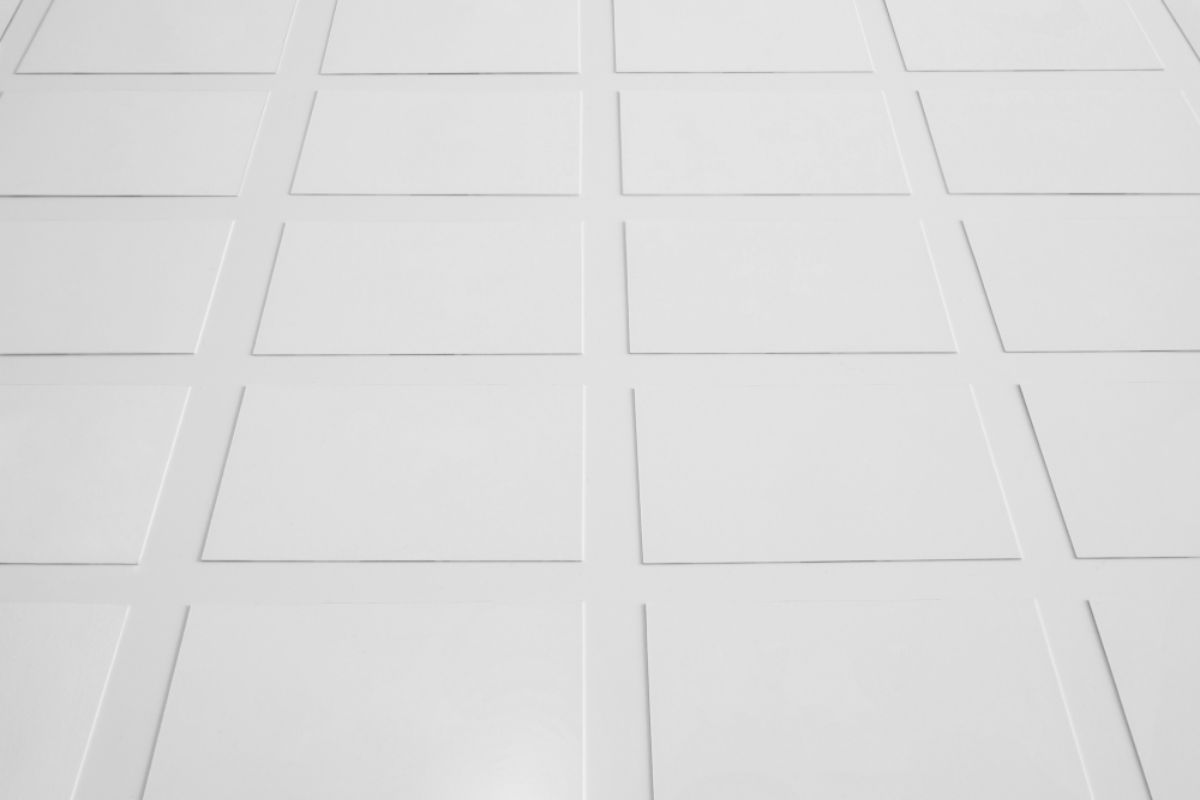Plastic injection molding is a manufacturing process with the principle ability of handling extremely large amounts of bulk parts production. It is important to note, however, that there are several processes when it comes to plastic manufacturing. Many companies also prefer this method over others, and because of this it affects other business sectors, such as pharmaceuticals and hospitals.
In today’s global economy, plastic has become well ingrained as an intrinsic sector in the world market. More and more businesses are constantly in search of the most reliable and cost-efficient method for generating their products and optimizing revenue streams.
This article offers a general overview that covers the basic surface-level skeletal structure of everything that goes into the economics of plastic processing, but ultimately focuses on injection molding and serves as a guide to understanding all the operative cogs that go into the process and the many ways in which this method can assist in boosting accumulative efficiency.
When it comes to plastic manufacturing there are intertwined and integral factors that go into considering the most fitting method for your purposes: The Form in which the shape of the final product is desired, the Budgeting of resource cost added with manufacturing parts cost, the Volume of the targeted total quantity, the Time of manufacturing that adheres to an approximated ideal deadline, and the Material which depends on final product output and desired method of manufacturing in relation to the other aforementioned factors.
The synthesis of all these factors is important because it dictates the direction in which you take your output line approximation by delineating the most appropriate method of production. Before we move on, we first need to cover the general types of common plastic formulas used in production:
Polyethylene – High Density, Low Density, or Ultra-High Molecular Weight, this material covers a wide range of durability levels; everything from plastic bags to cleaning bottles to bulletproof vests.
Polyethylene Terephtalate – Polyester fiber is usually utilized for apparel purposes. This more environmentally sound as light plastic is also recyclable in its substance.
Polyvinyl Chloride – PVC is commonly known as an industrial and construction plastic, but its versatility can also be used in the making of furniture, cables, and vinyl records.
Polyamide – Widely known in its pseudonym Nylon, this plastic is utilized for its flexible edifice; durability levels extend to ropes, cables, and heavy-duty machinery.
Polypropylene – This plastic formula is very adaptable and relatively low in cost to produce. The high melting point makes it more suitable in the production of food containers.
Polystyrene – Commonly known as Styrofoam, this plastic is repeatedly used to protect certain items from impact damage. Expanded Polystyrene is often used as padding.
Acrylontirile-Butadiene-Styrene – ABS is a plastic that is widely available and invulnerable to corrosives of a chemical nature.
Polyoxymethylene – Acetal’s plastic formula, after the molding process; reinforces and secures that a product keeps its initial shape. This product is normally used for cogs and various mechanical gears.
Polyurethane – This plastic is exceptional in its flexibility and versatility. Highly durable yet soft in texture; it can withstand even the harshest of conditions. Polyurethane material is also used as material for skateboard wheels.
Polycarbonate – Usually used as window type material, its transparent nature and high durability is made as the material of riot shields.
Acrylic – Similar to Polycarbonate in their transparent elements and high impact nature, this plastic can also be used for screen type gadgets.
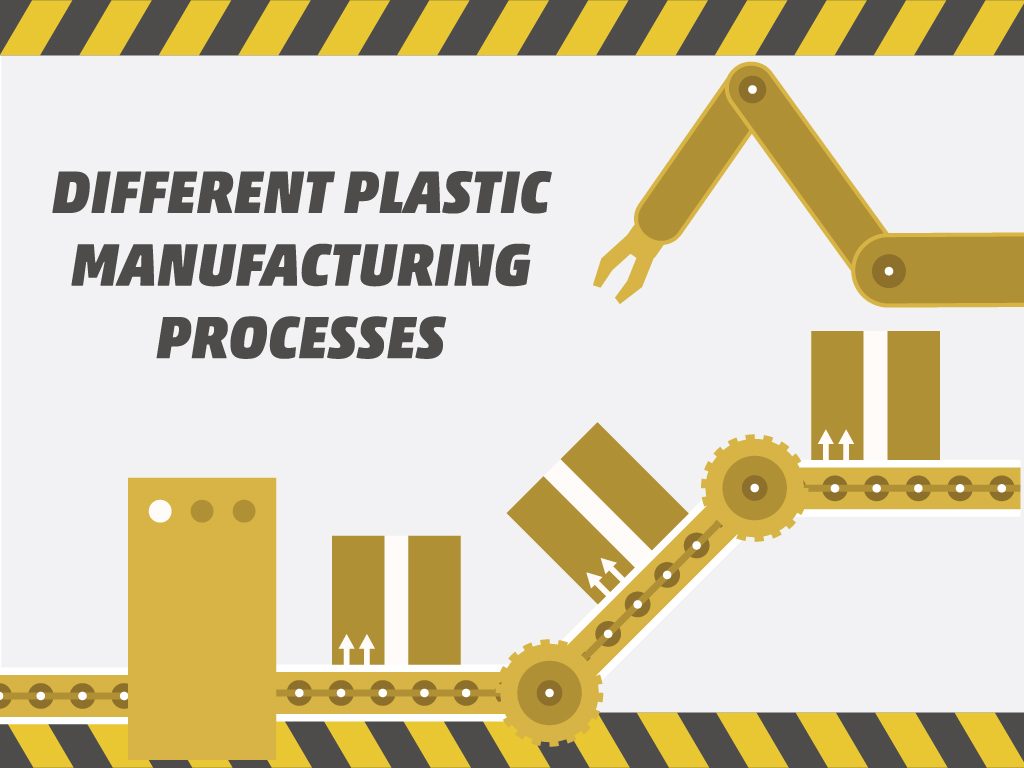
Different Plastic Manufacturing Processes
This section provides as an illustration that outlines the different methods of plastic product manufacturing divided by quantity sizing, and identified by source material and tools.
-
Low Volume
These methods operate on a more of purely grinding and cutting procedures for shaping.
Fabrication
The product shaped with a non-digital process of carving, welding, and gluing.
CNC machining
A block of material is computer controlled, and the product is shaped through a series of drilling and grinding.
3D Printing
Plugged into a computer is a 3D Model, and the machine shapes the product through structure printing.
-
Medium Volume
For Medium Volume and higher quantities of the required output, the molding and shaping is the most effective and necessary procedure for manufacturing.
Casting
Thick parts and wall sections are very possible outputs, however, this entails a lengthier production time of solidification post-cooling of mold.
Thermoforming
Sheet plastics are heated and vacuumed onto a mold. However, it is limited in shape due to only being determined by a single-sided-mold.
Rotational Molding
Molten formula is poured into a large mold and rotated until the formation of a hollow shape.
Compression Molding
2-part mold with heat and pressure processing, but only complies to limited shapes.
-
High Volume
High volume outputs require more highly industrial methods that incorporate large machinery in its mass production scale.
Extrusion Molding
Similar to a sausage mincer, the plastic formula is seeping through a die and comes out into a steady length of the final form.
Blow Molding
A pre-fabricated tube pushes slightly molten plastic by blowing hot air into it and forming a mold.
Injection Molding
The injection of plastic to a 2-part mold, cooling and solidifying warrants a laser sharp precision when it comes to shaping.
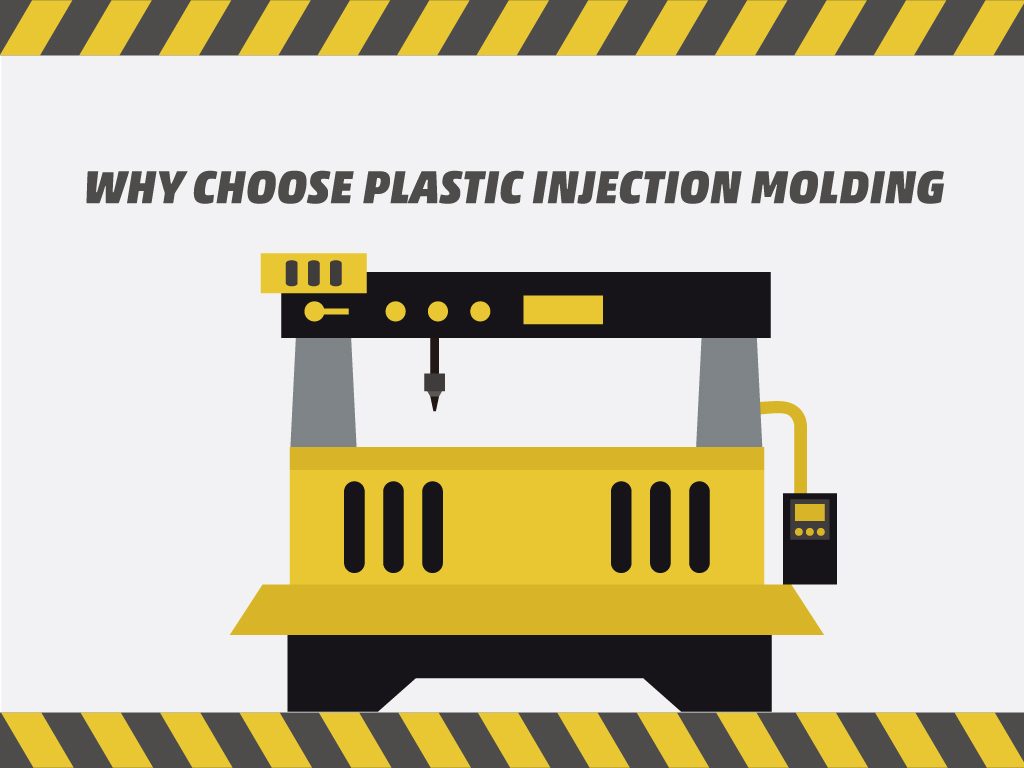
Why Choose Plastic Injection Molding (Over Other Processes)
There are many reasons for going with injection molding as your chosen process in plastic manufacturing. First off, it continually proves to execute absolute accuracy with its consistency of detailed features. High precision in handling prototypes of complex geometry is done so in a fast and highly efficient manner.
Another major reason is the enhanced strength and flexible qualities of the post-mold product. It’s a resourceful method with the high strength components of its machinery. It also carries the means to deal with diverse plastic types simultaneously, and because of its power in Co-injection molding, it can handle varieties. It holds low scrap rates and is rapidly repeatable in nature.
Finally, it is widely used and arguably the most popular method because of how much it saves overall manufacturing costs through its low labor costs. In the long term scheduling operations, it greatly saves on costs in contrast to plastic machining. Not to mention, how it is also an environmentally friendly means of mass producing.
(Source)
What is Plastic Injection Molding
Injection molding is a manufacturing process with the principle ability of handling extremely large amounts of bulk parts production. With the utilization of an injection molding machine, here are the 6 major steps that surmise the entire injection molding process:
- Clamping
- Injection
- Dwelling
- Cooling
- Mold Opening
- Removal of Products
The initial jumping off point for any injection molding project is always part design. The other major factor that comes to play in the injection method is the mold—the hollow and formulaic substance that would later be manipulated into the desired shapes. It fills the machine’s cavities; and finally takes form in the cooling process. The building of the mold is a huge component that dictates the overall material quality of the final output. Testing the mold means a scrupulous monitoring of the molding condition. Often times, it is the case that manufacturers further boost efficiency levels by using reprocessed materials.
Before beginning with the actual mechanical procedures, the final configuration for manufacturing process and colors are finalized before execution. Injection molding machines are segregated into a clamping unit and an injection unit. The injection unit essentially is in charge of heating plastic to a molten degree and then inputs the mold. Speed controls and pressure controls are then calibrated to a certain fixed value. The final fine tuning of mold and materials means the machine is ready to do its magic.
How It Started
The development of Injection Molding technology dates back to the invention of plastic substance itself. In 1847, the first condensation polymers were produced. John Wesley Hyatt’s introduction of the plastic derivative Celluloid reinvented the global manufacturing market. Hyatt, together with his brother, would later go on to construct the crude yet innovative prototype for the first ever injection molding machine in 1897.
Early in the 20th century, the invention of Bakelite gave rise to the everyday usage factor of plastics. Leading to the 1930s, the invention of major vinyl thermoplastics such as PVC and Polystyrene makes its way to becoming household essentials, even in the current day. With the rampages of World War II going on, the world’s industry sectors needed to call for cheaper means of mass production; leading to the breakout wonders of Nylon in 1941. From 1945 to the mid-50s saw the transition of Polyethylene to Polycarbonate. And the widespread use of injection molding methods in the 1970s set for gas fueled and assisted injection molding process.
In 1985, Japanese firms broke out with the premiere of purely electric molding machine; and when 1990 rolled around, Aluminum molds widely used in injection molding. To this contemporary day, injection molding has firmly planted its roots in the world’s economic trade.
Common Products
Literally everywhere you turn, it’s impossible not to find any consumer products that haven’t been made with the mass producing constructive abilities of injection molding.
Everything from automotive bumpers and dashboards to virtually every type of lid is produced in bulk through injection molding.
In the average household, electrical switches and CDs—central technological systems are built from the reliability and consistency of injection molding. The everyday demand for medical supplies in the Healthcare industry is also supplied by the mass production prowess of injection molding.
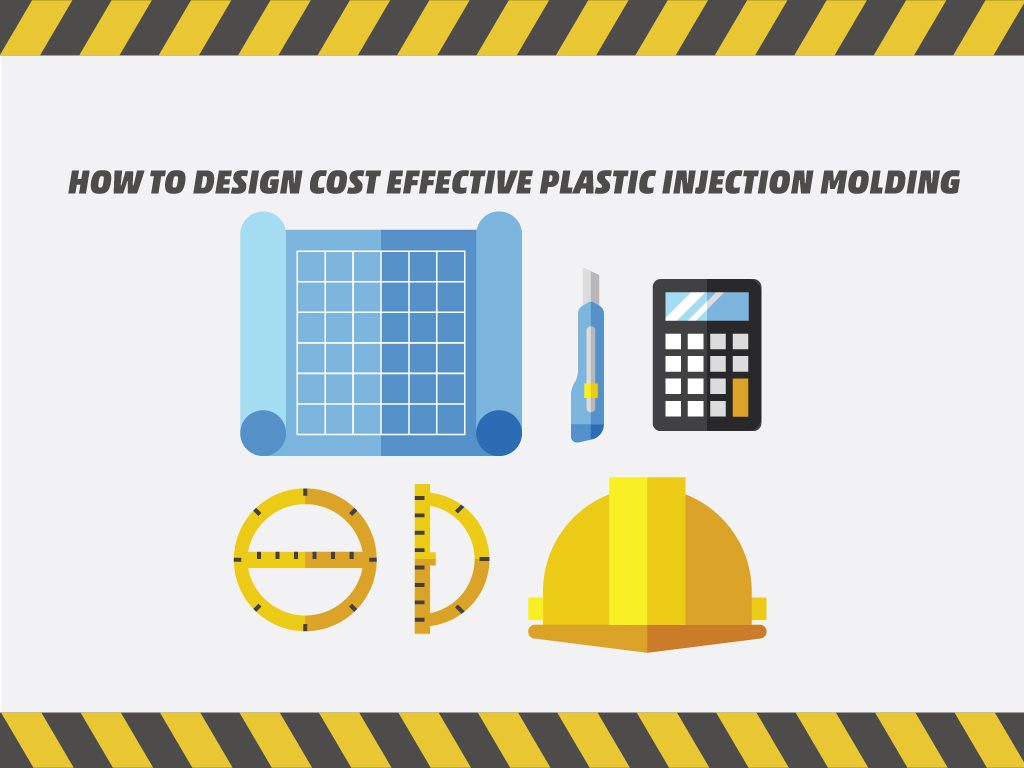
How to Design Cost Effective Plastic Injection Molding
When it comes to reinforcing cost effectiveness in the process of injection molding, its key to constantly keep in mind one of the main pros of the manufacturing method: bulk production.
Here are some points you need to remember when undergoing bulk production:
- Optimize plastic part design by focusing on design modifications before the actual processing.
- Improve molding by remembering to choose designs that only require minimal materials.
- Ensuring an adequate draft means putting great consideration into part size when analyzing structural requirements and reducing solid part areas.
Always remember to produce the maximum quantity with as little time as possible. Reduce tryout times by minimizing secondary processes and getting rid of superfluous features. Make sure to use core cavities during production; and make notes to reduce cosmetic finishes and appearances.
In the final cooling stages, eliminate undercuts for a more efficient mold–build. The major takeaway here is to always keep things as simple as much as possible.
In terms of purchasing mold materials and standard parts, guarantee that you’re only using qualified plastic parts and materials that strictly meet your needs. For long term fortitude in cost efficient molding, always keep design longevity in check; use family molds (multi-cavity). Keep in mind that It can only be beneficial to modify and reuse molds. With all this being said, don’t forget to only choose a consistently reliable shop.
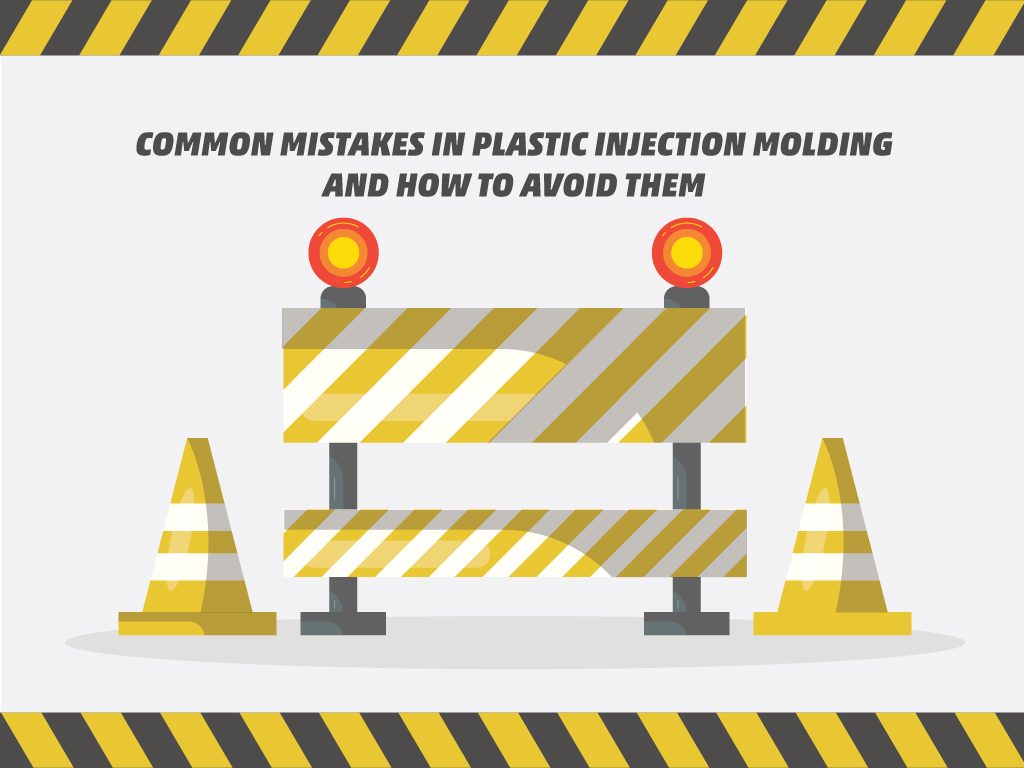
Common Mistakes in Plastic Injection Molding and How to Avoid Them
Although injection molding is an almost completely seamless process of mass production, it also carries within it a methodology that requires a practiced and trained skill set. Thus, it’s normal to run into a few troubles in initial runs, but remember that mistakes can cause a big dent in costs. What’s important is to always practice preventive measures and learn. Here are some of the common defects that can still possibly be remedied: Flow Lines, Sink Marks, Vacuum Voids, Surface Delamination, Weld Lines, Short Shots, Warping, Burn Marks, Jetting, and Flash.
In order to avoid these common mistakes in injection molding, it’s necessary to do everything in your power to facilitate the occurrence potential symptoms by making sure of proper design, size, and location of materials and tools. Improve proper wall thickness and design to avoid running into the labelled and aforementioned troubles; use textures because adding gloss will cover up and prevent mistakes that would be costly to mitigate design for stress avoidance, failing to do so may lead to major cost spikes.
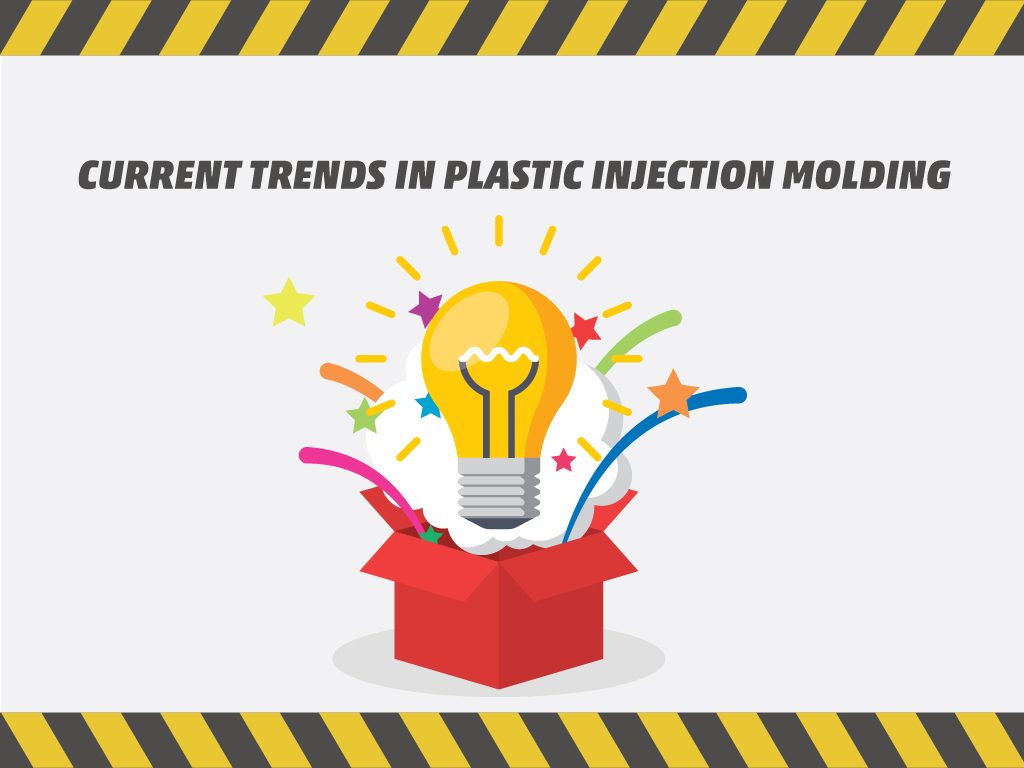
Current Trends in Plastic Injection Molding
The splash Injection Molding makes on the waters of manufacturing technology sends ripples to every major material market; medical devices, for instance, are decreasing in size and at the same time, improving on the front of effectiveness. In the current world of thriving minimalism in almost every aspect of everyday life, automotive parts are becoming lighter in weight; this means that consumer electronics are seeing innovations on every front.
Plastic injection molding companies are a tight-knit group that support each other. We would like to thank the Feedspot blog for including our site for the top 40 Blog Plastic Blogs and Websites for Plastic Industry Professionals.
Global Distribution of Injection Mold Products from China
Capably navigating the complexities of plastic manufacturing, China has emerged as a leader in the injection molding industry. Expertly utilizing advanced techniques such as plastic overmolding, Chinese manufacturers produce durable, high-quality products, distributed globally. Significant among these markets is the USA, which benefits from China’s efficient, cost-effective production scales. Consequently, China continues to influence the international standards for plastic mold production and distribution.
